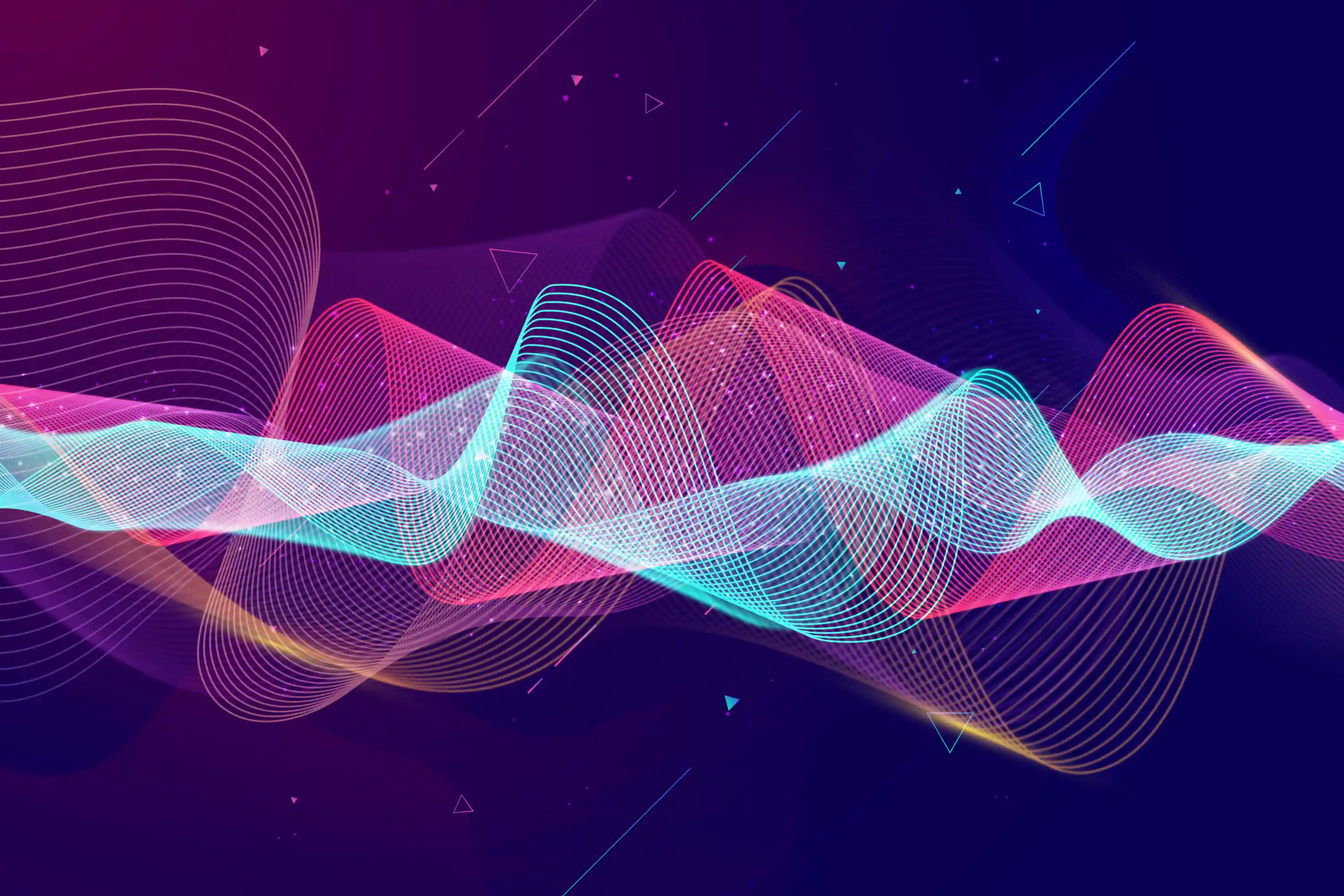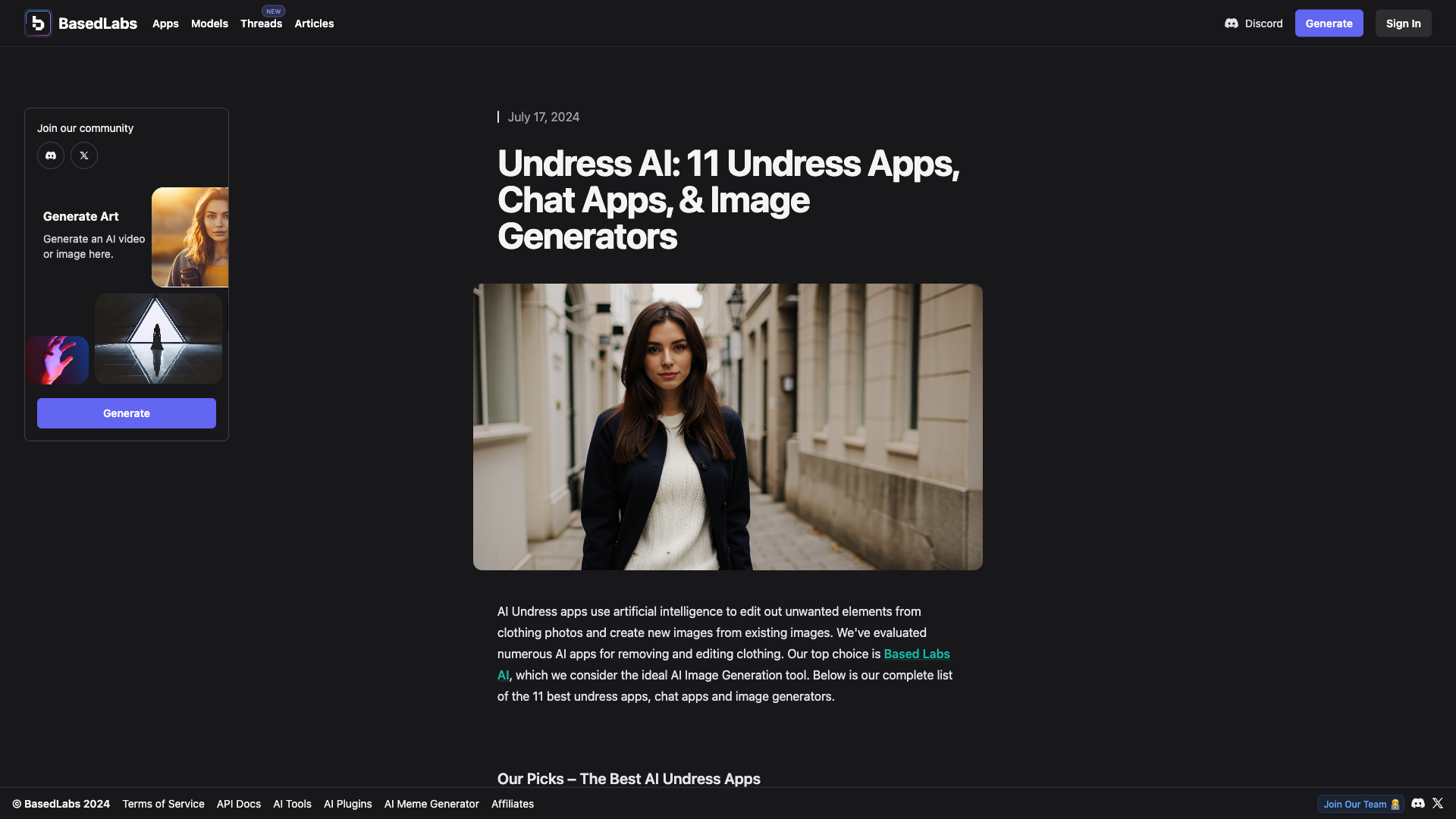Free undress AI has become a buzzword in the tech world, sparking curiosity and debates across various communities. If you're diving into this topic, you've come to the right place. This article will break down everything you need to know about free undress AI, its implications, and how it's shaping our world. So, buckle up, and let's get into it, mate!
Now, you might be thinking, "What exactly is free undress AI?" Well, it's not as straightforward as it sounds. Free undress AI refers to artificial intelligence technology that can digitally remove clothing from images or videos. Sounds wild, right? But hold your horses, because there's more to it than meets the eye. This tech has sparked ethical debates, raised privacy concerns, and even created new opportunities in industries like fashion and entertainment.
Before we dive deep into the nitty-gritty, let me set the stage. Free undress AI isn't just about the tech itself; it's about how we use it, the impact it has on society, and the future it might shape. This guide will cover everything from its origins to its potential uses and risks. So, whether you're a tech enthusiast, a curious mind, or someone concerned about privacy, this article has got you covered.
What Exactly Is Free Undress AI?
Let’s start by breaking down what free undress AI really is. At its core, it's an AI-powered tool that uses deep learning algorithms to manipulate images or videos. The goal? To digitally remove clothing from a person in the image or video. Now, before you jump to conclusions, this tech wasn't created just for pranks or mischief. It has legitimate applications, but more on that later.
The technology relies heavily on neural networks, which are trained using vast datasets of images. These networks learn patterns, textures, and shapes to generate realistic outputs. The result? An image or video where clothing appears to be removed seamlessly. But here's the catch—it's not always perfect. Sometimes, the results can be glitchy or unrealistic, depending on the quality of the dataset and the algorithm's training.
How Does Free Undress AI Work?
Ever wondered how this tech actually works? It’s like magic, but with a lot of coding and math behind it. Free undress AI uses a combination of image recognition, segmentation, and generation techniques. Here's a quick breakdown:
- Image Recognition: The AI identifies the person in the image and locates areas covered by clothing.
- Segmentation: It separates the clothing layer from the rest of the image, creating a mask of sorts.
- Generation: Using the data it has learned, the AI generates a new layer to replace the clothing, mimicking the person's skin or body shape.
This process is complex and requires powerful computing resources. But with advancements in technology, it's becoming more accessible to the average user. Platforms like GitHub even host open-source projects that allow enthusiasts to experiment with these tools. However, this accessibility also raises concerns about misuse.
The Origins of Free Undress AI
Like many groundbreaking technologies, free undress AI didn't just appear out of thin air. Its roots trace back to research in computer vision and deep learning. Scientists and engineers have long been fascinated by the idea of manipulating images in realistic ways. Over time, advancements in neural networks and generative adversarial networks (GANs) made it possible to achieve results that were previously unimaginable.
One of the earliest applications of similar tech was in the film industry, where visual effects artists used software to alter scenes or enhance visuals. As these tools became more sophisticated, they found their way into other industries, including fashion and healthcare. However, it wasn't until recently that free undress AI gained widespread attention, thanks to its potential uses—and its potential risks.
Key Milestones in Free Undress AI Development
To understand where we are now, it's important to look at some key milestones in the development of free undress AI:
- 2014: The introduction of GANs by Ian Goodfellow revolutionized the field of image generation.
- 2017: Deepfake technology emerged, showcasing the capabilities of AI in manipulating videos and images.
- 2020: Open-source projects began popping up, allowing hobbyists and researchers to experiment with free undress AI.
These milestones highlight the rapid progress in this field. But as with any powerful technology, progress comes with responsibility. Which brings us to the next big question: is free undress AI ethical?
Ethical Considerations of Free Undress AI
This is where things get tricky. Free undress AI raises serious ethical questions that can't be ignored. On one hand, it has the potential to revolutionize industries like fashion and entertainment. On the other hand, it poses significant risks to privacy and consent.
Imagine someone using this tech to create non-consensual images or videos. It's a scary thought, and unfortunately, it's already happening. Cases of AI-generated deepfakes being used for revenge porn or misinformation have been reported. This highlights the need for regulations and guidelines to ensure the responsible use of this technology.
Who Gets to Decide the Ethics?
The debate over free undress AI ethics isn't just about the tech itself; it's about who gets to decide how it's used. Should it be regulated by governments? Left to the discretion of tech companies? Or should the public have a say? These are tough questions with no easy answers.
Some argue that strict regulations are necessary to prevent misuse, while others believe that stifling innovation could hinder progress. Finding a balance between freedom and responsibility is crucial. And as users, we all have a role to play in advocating for ethical practices.
Legitimate Uses of Free Undress AI
Despite the controversies, free undress AI does have legitimate uses. In fact, it's already being applied in various industries to enhance creativity and efficiency. Here are a few examples:
- Fashion Design: Designers use this tech to visualize clothing on virtual models, saving time and resources.
- Entertainment: Filmmakers and game developers employ AI to create realistic characters and scenes.
- Healthcare: Medical professionals use similar technologies for diagnostic imaging and patient simulations.
These applications showcase the potential of free undress AI to transform industries. But as with any tool, the impact depends on how it's used. Responsible innovation is key to unlocking its benefits while minimizing risks.
Challenges and Risks
No discussion about free undress AI would be complete without addressing the challenges and risks it poses. From privacy concerns to legal implications, there are several hurdles to overcome. Here's a closer look:
Privacy Concerns
One of the biggest risks associated with free undress AI is the violation of privacy. Without proper safeguards, this tech could be used to create non-consensual content, leading to emotional distress and even legal issues. Ensuring user consent and protecting personal data are critical steps in mitigating these risks.
Legal Implications
As free undress AI becomes more prevalent, legal frameworks will need to adapt. Current laws may not adequately address the unique challenges posed by this technology. Legislators and policymakers must work together to create regulations that protect individuals while allowing innovation to thrive.
How to Use Free Undress AI Responsibly
If you're considering experimenting with free undress AI, it's important to do so responsibly. Here are a few tips to keep in mind:
- Always obtain explicit consent before using someone's image.
- Respect privacy and avoid creating content that could harm others.
- Stay informed about the latest developments and regulations in this field.
By following these guidelines, you can help ensure that free undress AI is used for good rather than harm. Remember, the power to shape its future lies in our hands.
The Future of Free Undress AI
So, what does the future hold for free undress AI? As technology continues to evolve, we can expect even more advanced applications and capabilities. However, this also means that the ethical and legal challenges will become more complex. It's up to all of us—developers, users, and policymakers—to work together to shape a future where this tech is used responsibly and beneficially.
Trends to Watch
Here are a few trends to keep an eye on as free undress AI continues to develop:
- Increased Accessibility: As tools become more user-friendly, more people will have access to this technology.
- Improved Accuracy: Advances in AI will lead to more realistic and accurate results.
- Stronger Regulations: Governments and organizations will likely implement stricter guidelines to address ethical concerns.
These trends suggest that free undress AI will continue to play a significant role in shaping our digital landscape. But the journey ahead won't be without its challenges.
Conclusion
In conclusion, free undress AI is a powerful technology with the potential to transform industries and society. However, it also raises important ethical and legal questions that must be addressed. By understanding its origins, applications, and risks, we can work towards a future where this tech is used responsibly and beneficially.
So, what’s next? I encourage you to share your thoughts and experiences in the comments below. Are you excited about the possibilities of free undress AI, or do you have concerns about its implications? Let’s keep the conversation going!
And don't forget to check out our other articles for more insights into the world of AI and technology. Together, we can navigate the complexities of this ever-evolving field.
Table of Contents
- Explore Kyle Martin From Baseball To 16th Second Speech Beyond
- Travis Berkley Murders Arrest More Latest Updates


